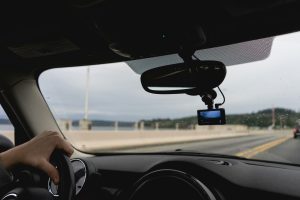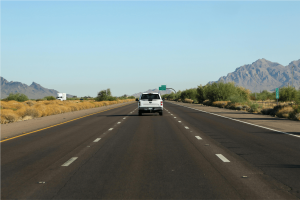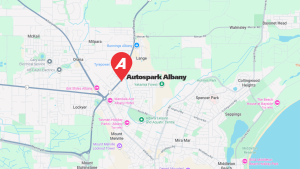Solar panels work the best when they face directly at the sun. In the morning, as the sun is coming up, they need to be almost vertical and facing the direction of the sun, to capture the rays. As the sun moves up and north, you want them to tilt down, until at midday where they should be almost flat, and then doing the exact opposite of the morning in the afternoon hours.
Solar is one of those things that, if you plan on spending a few days at one campsite, or have your fridge running all day, you’re going to need. If you’re staying in one spot camping, so long as you’ve got food and water, power is the next most critical thing.
How they work
Solar, or photovoltaic (photo = light; voltaic = voltage/electricity) panels, whether monocrystalline, polycrystalline, or amorphous all work in basically the same way. Energy and light from the sun knocks electrons loose from silicon atoms (the most common construction material used) on the top side of the cell to the bottom, creating an overbalance on the bottom of electrons. The only way those electrons can get back to the other side, is via the positive wire, through your battery (charging it on the way through), and back up the negative wire to the panel. Through the process the electrons continue to travel around the circuit, equalising themselves out as more are knocked through, charging your batteries as they go.
What do I need?
There are many calculators out there to help you work out how much input you’ll need, or you can always confer with us for what would be best for you. Within the calculator there are different examples of appliances you may own to work out your power requirements, from fridges and LED lighting and more. There are also apps available for your mobile phone that will help calculate your solar requirements.
The simple rule of solar is you need a battery big enough to supply all your electrical needs when the sun is not shining and enough solar panels to replace all that (plus an extra 20 per cent) when the sun is shining. It’s also worth considering where you’re touring, as different areas of Australia receive different amounts of sunlight per day, for example there will be shorter sun time in mountainous country, and in winter.
You can also consider these factors when deciding how big a battery, or battery bank you’ll need in the camper, caravan, or back of the four-wheel drive.
What else do I need to consider?
When it comes to solar power for your 4WD, Caravan or Camper trailer, the age-old question is should you go with fixed panels, or portable ones? There are valid arguments either way.
Fixed panels are attached to your vehicle or trailer in a way that makes them difficult to remove. Usually this means bolts, but sometimes they are riveted or glued in place. You’ll find them mounted to roof racks, on top of caravans, on boat loaders and sometimes even angled as wind deflectors on the top of 4WD’s.
Portable panels are pretty much ‘plug and play’. Basically, you pull them out of their case or bag, plug them into wherever they need to go, and face them into the direction of the sun. The most common setup in Australia is a Portable Solar Panel for Camping, although they are used in some smaller off grid setups.
There’s no one size fits all here, and this is what makes all the difference. Some people only run a small 12V fridge and can suitably get away with an 80watt panel and a portable battery pack. On the other hand, you might run a myriad of lights, chargers, a 55L fridge and also a 55L Freezer, therefore your needs would be quite different.
What other considerations are there?
Once you start needing more than about 200W of solar though, portable panels become a struggle as the physical size and weight is just too much to move around. If your power consumption is relatively low, you might get away with a single set of folding panels that you move around a couple of times a day. However, if you are using a fair bit of power you need to have a think about different options.
Something to note is that in most cases, as long as your panels face north and somewhere between 25 and 70 degrees, the difference in power generation throughout the day is fairly insignificant. You will get best results if you angle your panels correctly and move them around to follow the sun. For the 12V world on 4WD’s, caravans, camper trailers and boats, how much moving of panels do you want to be doing each day? Can you get away with fixing a few panels instead?
Keep in mind, there’s no point having a massive solar system and nowhere to store the power, as in batteries. Come sun down you will go through a fair bit, and if you don’t have enough power stored you will be in trouble as it trickles out. Unless you go down the path of Lithium, try and keep your batteries above 50 percent state of charge.
You can rely on our experience
Either way, Solar Power offers many advantages to travellers either on or off the road and Autospark have always been at the forefront of the latest innovations.
Autospark stocks a range of the most popular and best of brand versions to choose from like Redarc and Projecta and they are experts at fitting them for you too. If you need advice, you can always rely on the professionals at Autospark for the best in your adventures with Solar Power.





